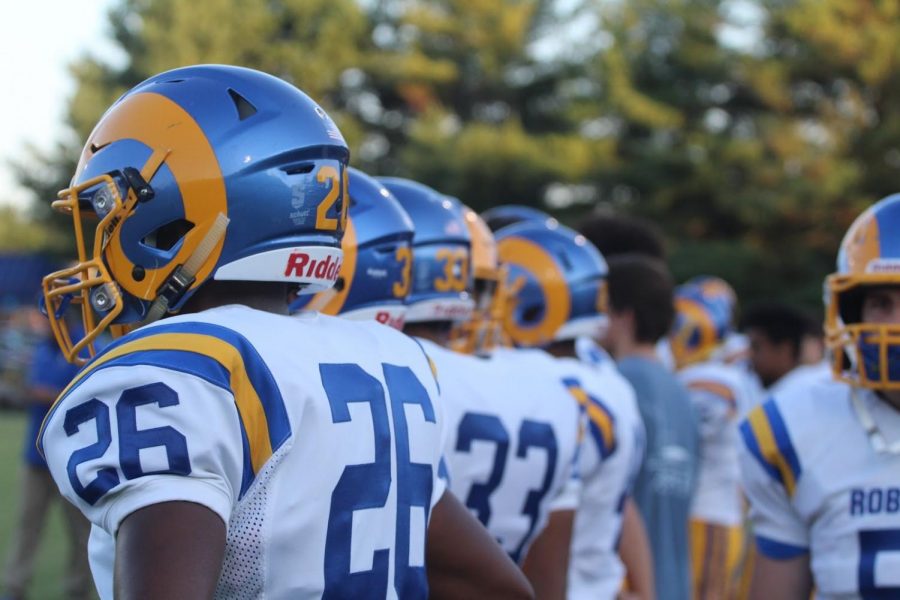Hundreds of highly regarded individuals from the scientific community went to the 223rd American Astronomical Society (AAS) Meeting held at the nation’s capital, Washington D.C. However, even though most people were PhD holders and published researchers, for the first time ever students from the school were able to attend.
The opportunity for Casey Hughes, Alex Huynh, James Mangahas, Rachel Otto, Brandy Skaddan and Paola Vidal to attend the national conference stems from the selection of physics teacher Melissa Booker into the NITARP program.
“Last year I applied to be with the NITARP Program, which stands for NASA IPAC Teacher Research Program, and was selected,” Booker said, “That meant I would be paired with a researcher from Caltech that would teach us about the research he does and would bring us along as part of his research team. As part of the program, even though this program is mostly for teachers to learn, is that students can learn along with the selected teacher. [Therefore], I had an application process and selected six students that would join me.”
Having been selected over a year ago, Booker and the selected six students must work with a researcher from Caltech in order to create a presentation to display at the 223rd AAS meeting. The topic given was on the “Pacman Nebula” and the physical properties of protostars produced in two different regions of the nebula.
“We started this program in a little more than a year ago. Since we were all very inexperienced with computer programming the first thing we did was familiarize ourselves with Python Programming by learning basic functions,” Skaddan said, “We also learned about star formation, classes of protostars, and the measurements used in astronomical research. We started studying the regions containing a high level of triggered star formation. The reason why we studied this region is because the east and west sides contain different types of triggered star formation – with Radiation Driven Implosions on the east and lateral compression of gas on the west. We wanted to see if the type of trigger had an effect on the characteristics of the protostars.”
According to Hughes the hardest part of this process was learning how to do the programming. It was difficult to learn, but when the group was able to figure it out, it was a great accomplishment.
During the group’s investigations and research, Booker and four other students were able to fly out to Caltech in California to do more in-depth research.
“In June, I traveled with Ms. Booker and three of my teammates to Caltech in California to meet up with the other members of our group and Astronomer Babar Ali,” Skaddan said, “This was an incredible experience and we spent our time conducting our research and gathering data on the protostars of NGC 281. It was very difficult because we spent long hours at our computers every day, but one of the most satisfying moments was when the computer program that we had been working on for hours finally worked.”
After a year of preparation, January 7th was the day the group was going to present the research. According to Booker most people who present are undergraduate or graduate students, therefore this was a huge deal that high school students are able to do this.
“It was really incredible to be treated as equals in an environment with real astronomers,” Skaddan said, “One of the best feelings was knowing that I was doing new research that had never been done before and that I was having an impact on the advance of science.”
According to Hughes this event allowed her to see how real scientists do research and gave her a lot of appreciation for them and how much work goes into what they do.
“Through the program, I gained an appreciation for the field of astronomy, and I believe that a lot of what I learned will help me in the future,” Huynh said, “I am not planning on becoming an astronomer, but the program has compelled me to perhaps pursue related fields such as aerospace engineering or chemical engineering.”
After presenting in front of the scientific community, the students were able to meet lead innovators and experts in different respective sciences or mathematics. One specific professional was the 2006 Nobel Prize winner John Mather. Mather was responsible for investigating the cosmic microwave background radiation of the universe.
It was so surreal meeting a Nobel prize winner,” Hughes said, “ I just couldn’t believe it. It was so nice that he took some time to talk to us and we even got his autograph!”




